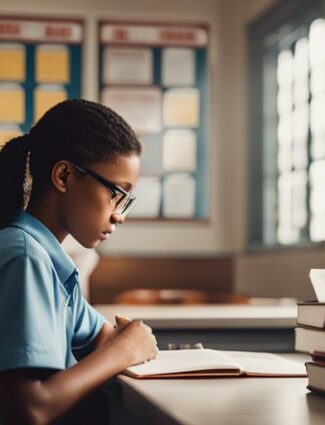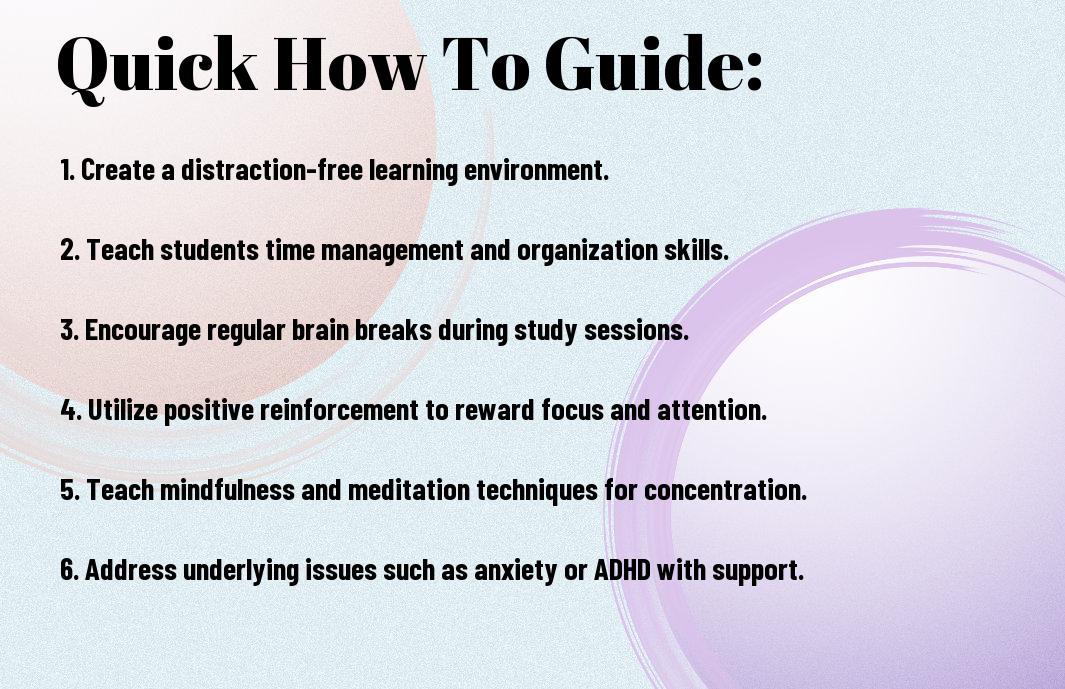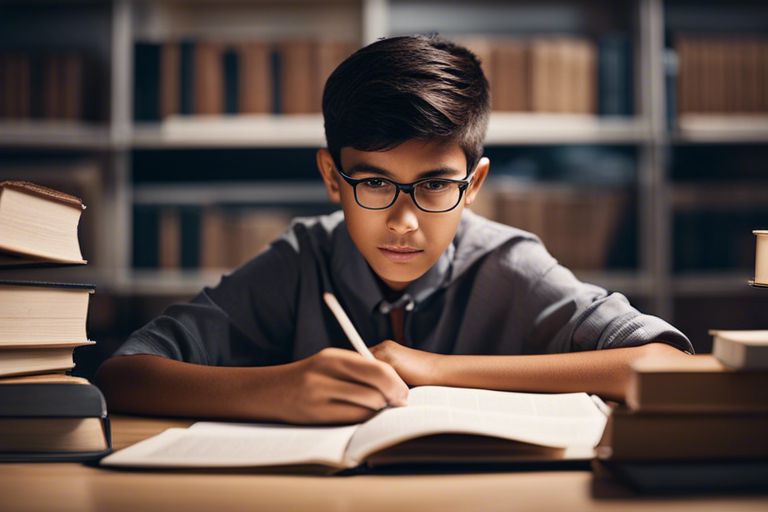How to Help Students Overcome Distractions in Middle School to Improve Learning

At this crucial stage of academic development, it is imperative to address the issue of distractions in order to maximize learning potential. As a middle school student, you are constantly bombarded with distractions, whether it’s from social media, friends, or personal thoughts. However, it’s important to recognize that overcoming these distractions is essential for academic success.
When it comes to helping middle school students overcome distractions, it’s crucial to establish a structured and consistent environment that fosters focus. This blog post will provide practical and effective strategies to help you minimize distractions and improve your learning experience. Whether you struggle with staying focused in the classroom or while studying at home, implementing the tips outlined in this post will empower you to take control of your learning and academic success.
Key Takeaways:
- Establish Clear Expectations: Setting clear guidelines and expectations for behavior can help students stay focused and minimize distractions in the classroom.
- Teach Time Management Skills: Teaching students how to manage their time effectively can help them prioritize tasks and avoid getting sidetracked by distractions.
- Provide a Structured Environment: Creating a structured and organized learning environment can help minimize distractions and encourage focused attention on academic tasks.
- Utilize Positive Reinforcement: Using positive reinforcement and rewards for staying on task can motivate students to overcome distractions and stay focused on their learning.
- Encourage Open Communication: Encouraging open communication and addressing individual student needs can help identify and remove specific distractions that may be hindering their learning.

Understanding Distractions in Middle School
Obviously, middle school can be a challenging time for students. With the transition from elementary to high school, they are exposed to a myriad of distractions that can hinder their learning process. It’s important to understand the nature of these distractions in order to effectively help students overcome them and improve their focus in the classroom.
Common Distractions for Middle School Students
One of the most common distractions for middle school students is social interactions. As they navigate through the complexities of peer relationships and social dynamics, it’s easy for them to get caught up in conversations and gossip, taking their attention away from the task at hand. Additionally, the prevalence of digital devices and social media platforms can also be a significant source of distraction for students. The constant notifications and temptation to check their phones can lead to a lack of focus during class.
Factors Contributing to Distractions
There are several factors that contribute to distractions in middle school. Puberty and hormonal changes can lead to emotional instability and mood swings, affecting students’ ability to concentrate. The increasing academic workload and pressure to perform well academically can also overwhelm students, causing them to lose focus. Moreover, environmental factors such as noisy classrooms or uncomfortable seating arrangements can make it difficult for students to concentrate on their studies.
- Hormonal changes: Puberty can lead to emotional instability and mood swings, affecting concentration.
- Academic pressure: Increasing academic workload and pressure to perform well can be overwhelming for students.
- Environmental factors: Noisy classrooms or uncomfortable seating arrangements can hinder concentration.
The combination of these factors can create a challenging environment for middle school students to stay focused on their studies. The key is to recognize these distractions and implement strategies to help students overcome them.

Preparing the Environment
Not only are distractions in middle school pervasive, but they are also challenging to overcome. It is important to create an environment that promotes focus and concentration. A distraction-free environment can make a significant difference in a student’s ability to learn and retain information.
Tips for Creating a Distraction-Free Study Area
The first step in preparing a distraction-free environment is to create a dedicated study area. This area should be free from clutter and noise, allowing you to focus solely on your studies. Consider the following tips to create an ideal study environment:
- Find a quiet space where you can concentrate without interruptions. Minimizing noise and distractions will help you stay focused.
- Ensure your study area is well-lit to prevent eye strain and fatigue.
- Remove any non-essential items from your study area, such as electronic devices or toys, to eliminate temptations and maintain focus.
Recognizing the importance of creating a distraction-free study area can greatly impact your ability to concentrate and improve your overall learning experience.
The Role of Classroom Design in Minimizing Distractions
Classroom design plays a crucial role in minimizing distractions for middle school students. A well-organized and structured classroom can contribute to a positive learning environment. Consider the following factors when evaluating the role of classroom design in minimizing distractions:
- Seating arrangements should be strategically planned to minimize distractions and promote engagement with the lesson.
- Classroom decor should be minimal and purposeful to avoid overwhelming students with excessive visual stimuli.
- Technology should be integrated thoughtfully to enhance the learning experience without becoming a source of distraction.
By acknowledging the impact of classroom design on student focus and engagement, you can better advocate for an optimal learning environment.
Establishing Routines
Now that you understand the impact of distractions on middle school students, let’s talk about how you can help them overcome these distractions to improve their learning. One of the most effective methods for managing distractions is to establish solid routines for students. Consistent schedules and built-in breaks can help students stay focused and on track with their learning.
The Power of Consistent Schedules
Consistent schedules are crucial for helping middle school students overcome distractions and improve their learning. When you establish a routine, you provide a sense of predictability and stability for students. This can help reduce anxiety and uncertainty, allowing them to focus more on their studies. When students know what to expect, they are better able to prepare themselves mentally and emotionally for the tasks at hand. Additionally, consistent schedules provide a structure that can help students stay organized and manage their time effectively. This can ultimately lead to improved academic performance and a more positive learning experience overall.
Building Breaks and Rewards into Learning Sessions
Building breaks and rewards into learning sessions can also help students overcome distractions and improve their learning. Breaks allow students to recharge their energy and refocus their attention, which can lead to better concentration and retention of information. By incorporating regular breaks into the learning schedule, you are giving students the opportunity to rest and reset, ultimately boosting their productivity and performance. Rewards can also serve as powerful motivators for students, encouraging them to stay on task and complete their work. By offering incentives for their efforts, you can help students stay engaged and motivated to overcome distractions and achieve their academic goals. Research has shown that positive reinforcement can have a significant impact on students’ behavior and performance, making it a valuable tool for improving learning outcomes.
Establishing routines, incorporating consistent schedules, and building breaks and rewards into learning sessions are essential strategies for helping middle school students overcome distractions and improve their learning. By providing a structured and supportive environment, you can help students stay focused and motivated, ultimately leading to better academic success and a positive learning experience.
Utilizing Technology Wisely
Unlike in the past, technology is now an integral part of education and can be a powerful tool for learning in middle school. However, with the myriad of distractions that come with technology, it is essential to use it wisely to help students stay focused and improve their learning experience. Here are some ways to utilize technology wisely to minimize distractions and enhance learning in middle school.
Apps and Tools to Enhance Focus
There are a variety of apps and tools designed to help students stay focused and organized. For example, apps like Forest and StayFocusd can help you stay on track by blocking distracting websites and apps for a set period of time, allowing you to concentrate on your schoolwork. Additionally, tools like Google Calendar and Trello can help you manage your time and tasks effectively, reducing the likelihood of digital distractions.
Guidelines for Reducing Digital Distractions
When utilizing technology for learning, it’s important to establish guidelines for reducing digital distractions. Set specific times for using devices for school-related tasks and establish boundaries for recreational screen time. Consider implementing a “no phones during study time” rule to help you focus on your assignments without the temptation of checking social media or playing games. Creating a conducive environment for learning by minimizing digital distractions can significantly improve your ability to concentrate and absorb new information.
Strategies for Individual Challenges
To help students overcome distractions in middle school and improve learning, it’s important to address individual challenges. Every student faces unique obstacles that can hinder their ability to focus and absorb information. In this chapter, we will discuss strategies to assist students with special learning needs and tailor approaches for different types of learners.
How to Help Students with Special Learning Needs
When it comes to supporting students with special learning needs, it’s crucial to provide personalized assistance. Some students may require accommodations such as extra time on assignments or access to assistive technology. It’s important to collaborate with their parents and school professionals to create an individualized education plan that meets their specific requirements. Additionally, offering extra support and encouragement can go a long way in boosting their confidence and helping them succeed academically.
Tailoring Approaches for Different Types of Learners
Every student has a unique learning style, and it’s essential to tailor your teaching approach accordingly. Some students are visual learners, while others may excel with hands-on activities. By identifying your students’ preferred learning styles, you can adjust your lesson plans to cater to their individual needs. Providing a variety of learning materials and incorporating your student’s interests into your lessons can also help keep them engaged and focused. After all, you want to create an environment where every student feels valued and supported in their learning journey.
| Special Learning Needs | Different Types of Learners |
|---|---|
| Personalized assistance | Identifying learning styles |
| Collaboration with parents and professionals | Tailoring teaching approach |
| Extra support and encouragement | Providing a variety of learning materials |
| Creating individualized education plans | Incorporating students’ interests into lessons |
| Boosting confidence and academic success | Keeping students engaged and focused |
Involving Parents and Guardians
For middle school students, involving parents and guardians in their education can be crucial for overcoming distractions and improving learning. Your role as a parent is essential in addressing the challenges your child may face and supporting their academic success. Here are a few ways in which you can get involved in your child’s education:
Communicating About Student Progress and Challenges
Communication with teachers about your child’s progress and challenges is key to addressing distractions and helping them succeed in middle school. Regularly check in with your child’s teachers to understand how they are doing in their classes, and ask about any areas where they may need extra support. Stay informed about their academic performance, behavior, and any areas where they may be struggling. This open line of communication can help you and the teachers work together to address any distractions and help your child thrive in their learning environment.
How Parents Can Support Learning at Home
As a parent, you play a vital role in supporting your child’s learning at home. Creating a positive and distraction-free study environment will greatly benefit your child’s ability to focus and learn. Ensure that there is a designated space for studying that is quiet, well-lit, and free from distractions such as TV, video games, or other electronic devices. Encourage your child to establish a consistent study routine and help them stay organized with their schoolwork and assignments. Additionally, showing a genuine interest in their academic pursuits and providing encouragement and support can go a long way in helping your child overcome distractions and achieve academic success.
Measuring Progress and Making Adjustments
After implementing strategies to help students overcome distractions, it’s important to measure their progress and make any necessary adjustments. This will ensure that the efforts being put in place are effective and are actually helping the students improve their learning outcomes.
Monitoring Student Improvement
As you begin to implement strategies to help students overcome distractions, it’s important to monitor their improvement. You can do this by tracking their academic performance, behavior in the classroom, and their ability to stay focused on tasks. Keep a close eye on their test scores, class participation, and completion of assignments. Additionally, you can collect feedback from the students themselves and their parents to gain insight into their progress. This will help you identify any areas where they may still be struggling and require further support.
Adapting Techniques for Better Results
While monitoring student improvement, you may find that certain techniques are more effective than others. It’s important to be flexible and adapt your strategies to better suit the needs of the students. For example, if you find that a particular method of minimizing distractions is not working for a particular student, you may need to try a different approach. Additionally, you can seek feedback from the students and involve them in the process of finding strategies that work best for them. This collaborative approach can help create a more positive and conducive learning environment.
By monitoring student improvement and adapting techniques for better results, you can ensure that the strategies you are implementing are effectively helping students overcome distractions and improve their learning outcomes. Remember to stay flexible and open to making adjustments as needed to best support the individual needs of your students. By doing so, you can ensure that they are receiving the necessary support to excel academically and overcome distractions.
How to Help Students Overcome Distractions in Middle School to Improve Learning
Taking this into account, it is crucial to recognize the impact of distractions on a student’s ability to learn and succeed in middle school. By implementing strategies such as creating a structured and organized learning environment, fostering positive study habits, and introducing mindfulness techniques, you can help students overcome distractions and improve their focus and concentration during the learning process. Additionally, providing individual support and guidance to students who struggle with distractions can make a significant difference in their academic performance. By addressing distractions proactively and offering the necessary support, you can empower students to excel in their studies and develop essential skills for success in the classroom and beyond.
FAQ
Q: Why is it important to help students overcome distractions in middle school?
A: It is important to help middle school students overcome distractions because it can significantly impact their ability to learn and retain information. Distractions can lead to poor concentration, reduced academic performance, and hinder their overall learning experience.
Q: What are some common distractions in middle school?
A: Common distractions in middle school include social media, electronic devices, peer pressure, lack of organization, noisy classroom environments, and personal issues. These distractions can disrupt a student’s focus and hinder their learning process.
Q: How can we help students overcome distractions in middle school to improve learning?
A: To help students overcome distractions, it is important to create a structured and organized learning environment, establish clear expectations and consequences for distractions, teach time management and self-regulation skills, provide support for personal issues, limit access to electronic devices during learning time, and encourage open communication with students about managing distractions.